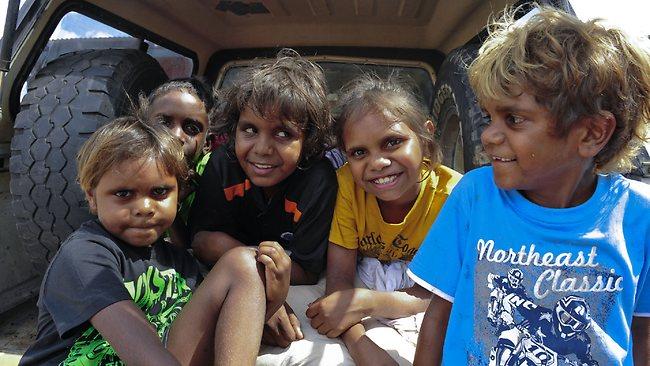Aboriginal language 'crisis' exaggerated, says census
NEW census analysis reveals that the "crisis" in Aboriginal languages is overstated, debunking the notion that mother tongues are dying out.

NEW census analysis reveals that the "crisis" in Aboriginal languages is overstated, debunking the notion that mother tongues are dying out.
In the Northern Territory the proportion of Aborigines speaking an indigenous language at home rose from 59.1 per cent in 2006 to 64.7 per cent in 2011.
Nationally the number of indigenous language speakers rose in nominal terms by 8560 people, but fell in real terms (12.1 per cent to 11.6 per cent). Australian National University fellow Nicholas Biddle says this can be explained by a demographic shift of Aborigines to east coast states, where traditional ways are weaker.
"While there was a decline in the proportion of indigenous people who spoke an indigenous language, this was mainly driven by increases in the indigenous population count in the east coast states," Dr Biddle told The Weekend Australian.
He argues in a paper that given that much of the growth in the population has been in areas where indigenous language usage is quite low -- NSW, Victoria and the ACT -- the fact that there has been such a small decline is "somewhat positive".
"One of the major benefits of ongoing language usage is the preservation of the languages themselves. The census doesn't tell us much about the extent or fluency of the language usage," the paper says. "Perhaps more than proportions, what matters the most for the preservation of the languages themselves though is the number of speakers."
At Little Sisters town camp on the outskirts of Alice Springs, Julie Clyne says: "We have to keep the kids to be strong with their language. They do English while they're in school, but we get the kids to keep the language strong at home.
"It is part of our life. It's about our culture and our country, our Dreaming.
"We have to teach them language to be strong, so they can understand the land and the culture and the environment as well."
Ms Clyne speaks Yankunytjatjara, but regional and family relationships means that several other languages need to be known, including Arrernte, Warlpiri and Pitjantjatjara.
The census analysis has also found that indigenous population movement tended to be out of remote parts of the country.
Between 2006 and 2011, in net terms about 13.8 per cent of the indigenous population of the Torres Strait Indigenous Region left for other parts of the country.
The next highest rate of net outward migration was Mount Isa with a rate of 7.9 per cent, followed by northwestern NSW 6.5 per cent, Kununurra 6.2 per cent, Cape York 5.6 per cent, Apatula 5.5 per cent and West Kimberley 5.1 per cent.
Instead indigenous people are moving to regional centres.
Dr Biddle said migration was mainly driven by economic and social circumstances.
"The regions with the largest net inflow of indigenous people had reasonably large urban centres, but were not our major capital cities. These include Alice Springs, Cairns, southwestern WA, South Hedland and Rockhampton.
"Regions where a lot of indigenous people left over the five years tended to be a little more remote and included the Torres Strait, Mount Isa, North-Western NSW, Kununurra, Cape York and Apatula."
Dr Biddle said indigenous net migration was highly correlated with non-indigenous migration, suggesting some common causes. The exception was Alice Springs with the the highest indigenous migration, but one of the highest non-indigenous departure rates.


